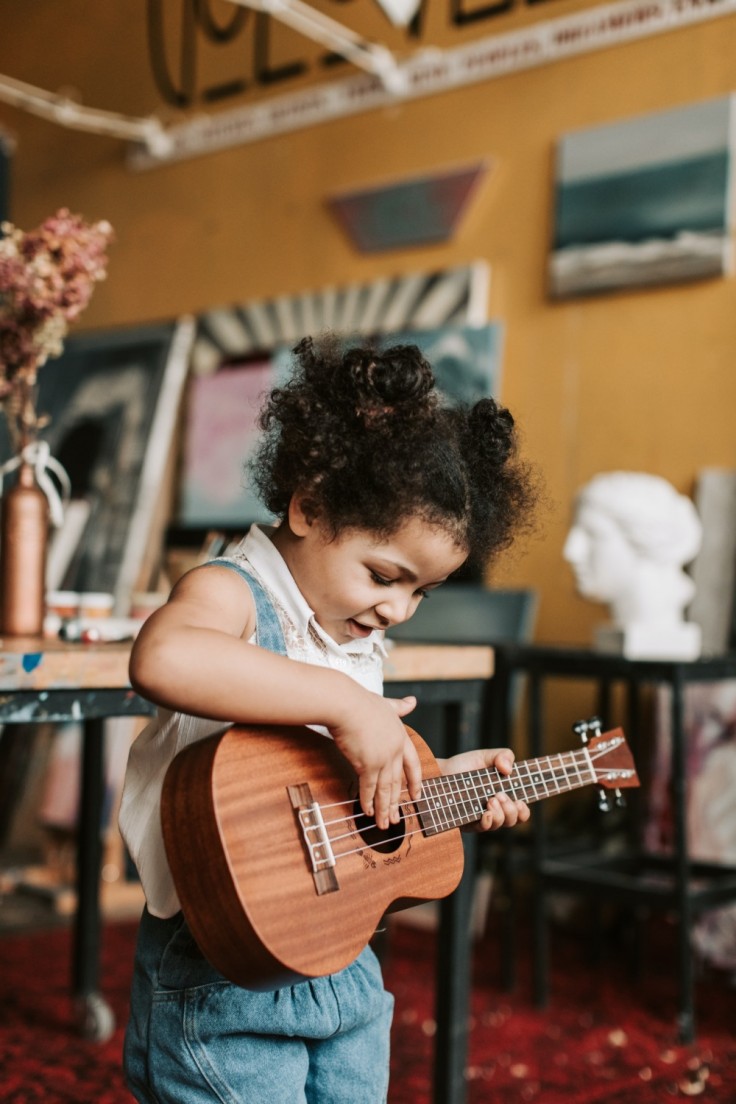
A Guide To Choosing Your Child's First Guitar Many children like the idea of playing the guitar and this guide to choosing your child's first guitar will ensure they get off to the right start. Learning an instrument is a great way for a child to develop their cognitive, social and emotional development and helps them master their coordination and motor skills. Choosing a guitar of an appropriate size is the most important consideration and will ensure your child can learn how to play successfully. A guitar that is too big will make it hard for your child to play comfortably and could even be painful - especially when you are not thinking about choosing an electric guitar made specifically for small hands. If it is too big everything will be clumsy and heavy to handle while if it is too small your child's fingers will not be able to play the required notes. Here is a rough guide to the size guitar your child should be using based on their age:
- Age 5-8 - 1/2 size
- Age 9-13 - 3/4 size
- Age 13+ - Full size
Choosing the Type of Guitar
Every child dreams of playing their favourite songs on an electric guitar, at full volume while making the guitar scream. In reality, the electric guitar is probably not the best option for a beginner. The steel strings on an electric (or regular acoustic guitar) can be painful for small fingers. Eventually, the ends of their fingers will become hard with calluses, but this is only after much practice. A gentler solution is to start with a classical guitar that has strings made from nylon. Nylon strings are much more gentle on small fingers and are a good option to start; classical guitars also tend to be lighter and easier to handle. If your child is older, however, and the only way to get them to practice is with an electric guitar then get them one but get some advice about the thickness of strings they should use as beginners.
Other Things You'll Need
The purchases don't stop with the guitar, you'll also need some accessories but these can be purchased for a reasonable price. Here are some of the extras you'll need to purchase along with the guitar (some may come included if you're lucky):
- Electric Tuner - keeping the guitar in tune is tricky when just starting out. Forget tuning forks, use an electric tuner or a microphone connected to a tuner to tune the strings.
- Guitar Case/Bag - it is always best to have a bag to put the guitar in to keep it safe from knocks. If your child takes lessons it is a good accessory to have when travelling.
- Spare Strings - occasionally a string will snap and will need to be changed and you'll also need to change all the strings periodically so having a spare set or two available is a good idea.
- Other accessories - a guitar strap is always useful and a cloth is always handy when wiping the guitar down; plectrums will be needed for strumming; and, finally, when changing the strings you'll need a string winder to help get the string in tune quickly.
What to Look for in a Guitar
The first thing you should check is the guitar action; this is the gap between the fret board and the strings. If the action is too high the guitar will be hard to play while if it is too low the strings will buzz as you play them. Make sure when buying a guitar from a music shop that you ask how to tune the guitar - initially you'll need to do this regularly! If your child is left-handed this doesn't mean they'll need a guitar that is set up for left-hand play. Playing the guitar is evenly split between right and left hands so see which way your child prefers to play first.
Make Learning the Guitar Fun
One of the most important elements to keeping your child interested in guitar playing is to make learning the guitar a lot of fun. While it can take a while to learn the basics, and they shouldn't expect to be playing like a professional in a few weeks, once they can pick out a tune it becomes much easier. Learning the guitar can be enjoyable and letting children learn their own way is the best approach to ensuring they keep going.
Final Thoughts
When choosing your child's first guitar, go to a store and let them try out different guitars to see what suits them best (rather than purchasing from the internet immediately). Buying your child's first guitar will help you decide whether it is worth investing in other guitars later and then buying the best guitar you can afford. Remember that the best guitar doesn't always have to be the most expensive option or a premium brand. A good starter guitar is one that will suit your child and encourage them to keep playing.